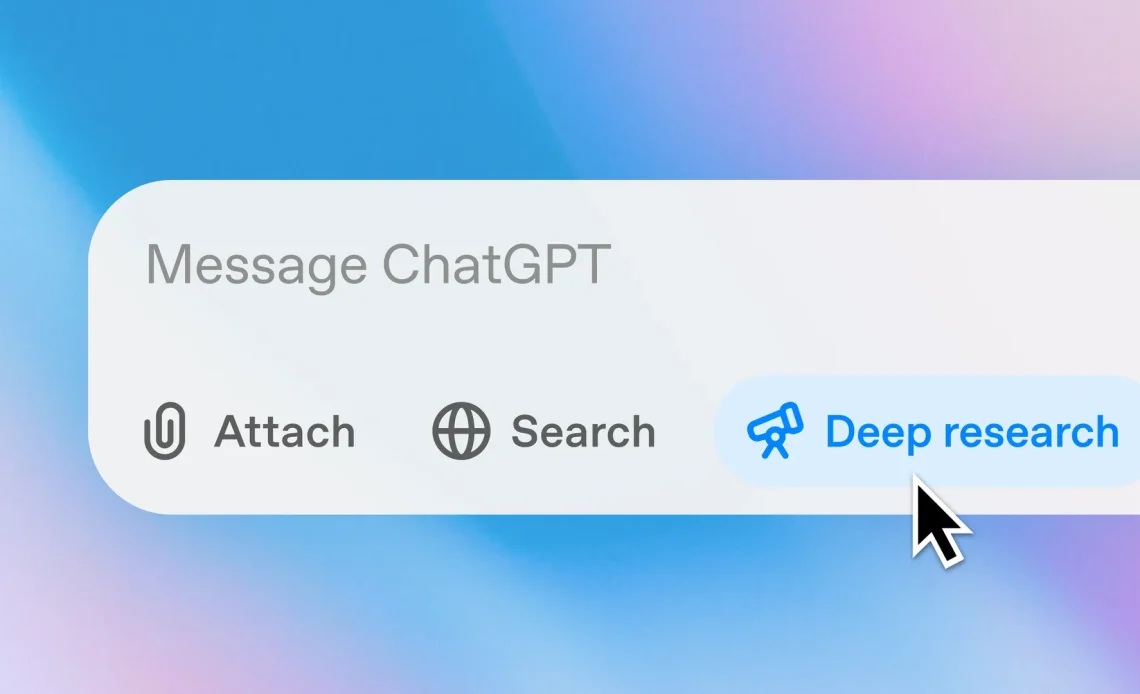
OpenAI has unveiled “Deep Research,” a cutting-edge feature for ChatGPT that redefines the landscape of autonomous information gathering. This innovation empowers the AI to autonomously chart and execute intricate, multi-step strategies to unearth necessary data, adeptly backtracking and adapting to real-time information as required. Unlike traditional text generation, Deep Research offers a transparent window into its investigative journey, presenting users with a sidebar that meticulously summarises its process, complete with citations and a comprehensive overview of the methodologies employed.
The Mechanics Behind the Magic
At the heart of Deep Research lies OpenAI’s latest O3 reasoning model, meticulously optimised for web browsing and data analysis. This avant-garde AI agent scours the vast internet, interpreting and analysing a wide array of texts, images, and PDFs. The culmination of this rigorous process is a detailed report that rivals the depth and insight of a seasoned research analyst.
Users can submit queries enriched with context, including text, images, PDFs, or spreadsheets, and the system delivers a well-researched response within 5 to 30 minutes. Currently, Deep Research supports text-based outputs, but OpenAI has ambitious plans to integrate embedded images, data visualisations, and other analytical tools soon, further enhancing its utility and appeal.
Navigating the Challenges
Despite its impressive capabilities, Deep Research is not without its challenges. OpenAI acknowledges that the tool is still susceptible to “hallucinations,” a phenomenon where the AI fabricates information. Moreover, it sometimes struggles to distinguish authoritative information from mere rumours and often fails to convey uncertainty with the necessary accuracy. These limitations raise pertinent questions about the reliability of the detailed reports generated by Deep Research.
Users are advised to meticulously verify the information provided, delving into the detailed citations to ensure the authenticity of the content. While this verification process is essential, it somewhat diminishes the convenience an autonomous AI agent should offer. In response to these concerns, OpenAI is working on enabling Deep Research to connect to specialised data sources, including subscription-based and internal resources, aiming to bolster the robustness and personalisation of its outputs.
Also Read – Want a Free ChatGPT Alternative? Here’s How to Use DeepSeek on Your Devices
The Road Ahead
OpenAI’s introduction of Deep Research marks a significant milestone in the evolution of AI-driven information gathering. By autonomously navigating the complex web of online data, this feature promises to revolutionise how users access and interpret information. However, the current challenges underscore the necessity for ongoing refinement. As OpenAI continues to fine-tune Deep Research, addressing issues related to information accuracy and the clear communication of uncertainty will be paramount.
As it stands, Deep Research offers a glimpse into the future of AI-assisted inquiry. It blends autonomous data collection with human oversight to ensure precision and trustworthiness. While Deep Research is a remarkable advancement in AI technology, users must remain vigilant, critically assessing and cross-referencing the information with authoritative sources. This balanced approach will ensure that the benefits of this innovative tool are fully realised, paving the way for more reliable and insightful AI-driven research in the future.

